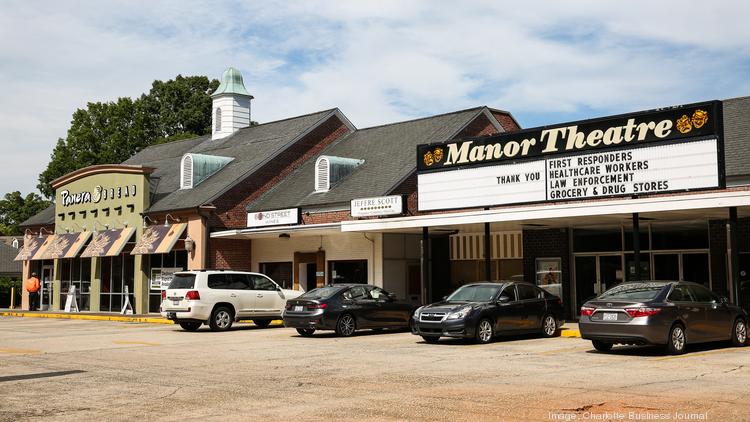How much will vacancy rise as a result of pandemic?
- June 3, 2020
- Uncategorized
Forced to shut down completely for weeks that have since turned into months, retailers and restaurateurs are some of the most visibly struggling businesses because of the Covid-19 pandemic.
What were places intentionally designed for people to congregate have suddenly become potential ways for the virus to rapidly spread. In the age of social distancing, people are staying home and away from enclosed spaces.
Now, retail landlords, tenants and investors are having to pump the brakes and wait to see what — and when — a return to public spaces will look like.
“We’re still in the eye of the storm,” said Adam Williams, partner at Legacy Real Estate Advisors, who specializes in urban retail leasing. “You’ve got a lot of people … reinventing their whole business model on the fly. This is uncharted territory.”
A handful of sectors in the national retail economy have actually grown. Grocery sales, for example, increased 26.9% in March from a month prior, according to U.S. Census Bureau data.
But most subsectors of the retail industry saw a steep dropoff in sales — the worst hit being clothing and accessories stores, where sales decreased 50.5% in March from a month prior. On the whole, March retail sales were down 8.7% from February, the largest monthly decline since the Census began tracking that data.
Andy Misiaveg, partner at The Shopping Center Group’s Charlotte office, said there could be long-term damage for retail landlords with tenants closing or bankruptcies.
Some retailers have already said they won’t reopen. Others will reopen but won’t be able to achieve the same level of sales they did pre-pandemic and will be forced to close, he said.
“We don’t see a world where it’s going to go back to 90% or 100% of sales until maybe sometime next year,” Misiaveg said.
The Consumer Confidence Index was at 86.9 in April, down from 118.8 in March and 130.7 in February. And it will likely take time for consumer confidence and spending to return, even as restrictions on businesses are lifted, because of larger economic uncertainty.
Williams said urban retail may be more insulated than suburban centers because tenant footprints are generally smaller. Landlords and tenants in Charlotte have generally been able to negotiate agreements on rent because of the pandemic, he added.
Misiaveg said a lot depends on how many retailers declare bankruptcy and the subsequent impacts on their real estate. J.Crew, Neiman Marcus and Gold’s Gym all recently filed for bankruptcy protection.
Movie theaters have been among the businesses propelling retail in the past several years — and accounting for a lot of square footage — but they could struggle after being closed for so long, Misiaveg said. The owner of CMX Cinemas also filed for bankruptcy last month.
Fitness as a sector has also been in growth mode, both locally and nationally. Jesse McConnico, market analyst at CoStar Group, said the Charlotte retail market has grown most notably in grocery and fitness, and its exposure to the latter could spell trouble for some properties.
One local retail landlord said the pandemic will provide a “cooling off” period in pricing. He said some retailers were paying far more than 20% of their revenue on rent to be in trendy urban areas, where rates are highest.
Landing credit tenants will become more important in the future, the landlord added. But that could change the character that comes with leasing space to local, unique businesses that don’t have the established credit of larger groups.
In Charlotte, retail vacancy rates were 6.4% at the end of the first quarter, according to Cushman & Wakefield data. Misiaveg expects some properties could see vacancy rates as high as, or higher than, 20%.
McConnico said the national expectation is that some — possibly many — retailers will close or downsize, which will mean more space hitting the market and vacancy rising dramatically.
Fast-casual dining, with its ease in takeout, may end up stronger, Williams said. Restaurants will likely invest in improved trade dress — the visual characteristics of a brand — to help bring the experience of a restaurant into packaging for to-go orders.
“You’re going to see less of the three-cent Styrofoam and more of a really intelligently designed experience that you can bring home with you,” Williams said.
In fact, he predicted there will be a heavy degree of innovation that will result in the next wave for the retail sector. Williams said he felt landlords will continue to see value in adding retail space into future mixed-use projects. But developers of planned or under-construction projects that call for 100,000 square feet or more of retail space are probably asking themselves some hard questions, he added.
“Retail in the real estate world is like airlines: Everybody needs it; it’s not going to go away, but we are in the middle of the hurricane,” Williams said.
Original Article here
